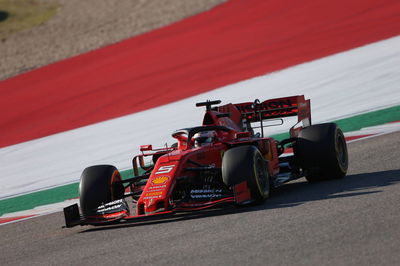Wolff: Ferrari speed trace data ‘totally different’ in Austin
Mercedes’ internal data showed Ferrari’s straight-line speed was “totally different” during Sunday’s United States Grand Prix amid scrutiny of its engine performance after an FIA technical directive issued last week.
Ferrari has been subject to speculation about the legality of its power unit in recent weeks after enjoying a surge in form since the summer break, producing a straight-line speed that left rivals Mercedes and Red Bull lagging far behind.

Mercedes’ internal data showed Ferrari’s straight-line speed was “totally different” during Sunday’s United States Grand Prix amid scrutiny of its engine performance after an FIA technical directive issued last week.
Ferrari has been subject to speculation about the legality of its power unit in recent weeks after enjoying a surge in form since the summer break, producing a straight-line speed that left rivals Mercedes and Red Bull lagging far behind.
A technical directive was issued ahead of the race in Austin after Red Bull went to the FIA’s technical department with a possible fuel system solution that was deemed illegal.
Ferrari failed to compete for victory in the race as Charles Leclerc finished more than 50 seconds down on winner Valtteri Bottas.
Red Bull driver Max Verstappen said after the race it was “not strange” Ferrari’s form had taken a downward turn, prompting an angry response from Leclerc and Ferrari chief Mattia Binotto.
Asked about Ferrari’s form in Austin, Mercedes F1 chief Toto Wolff revealed the team’s data showed there had been a big change in the SF90 car’s straight-line performance.
“We just had a discussion about the data from the race, and the speed trace looks totally different to the last few races,” Wolff said.
“Whether it’s down to the technical directive or down to another issue, I honestly don’t know as we can’t look into what Ferrari has done.”
Wolff was then asked what would happen if a team had been found to be in breach of a technical directive before it had been issued, and whether it would be a “grey area”.
“If someone was doing what the technical directive clarified, it would have been foul play,” Wolff said.
“The way the technical directive was formulated, it was a severe breach of regulation, so there was not even any talk of grey areas.
Ferrari chief Binotto claimed after the race that the team had sacrificed some of its straight-line performance to try and help its cornering, given the requirements of the first and final sectors at the Circuit of The Americas.
Additional reporting by Julianne Cerasoli.











